Mullet and rabbitfish are potential species
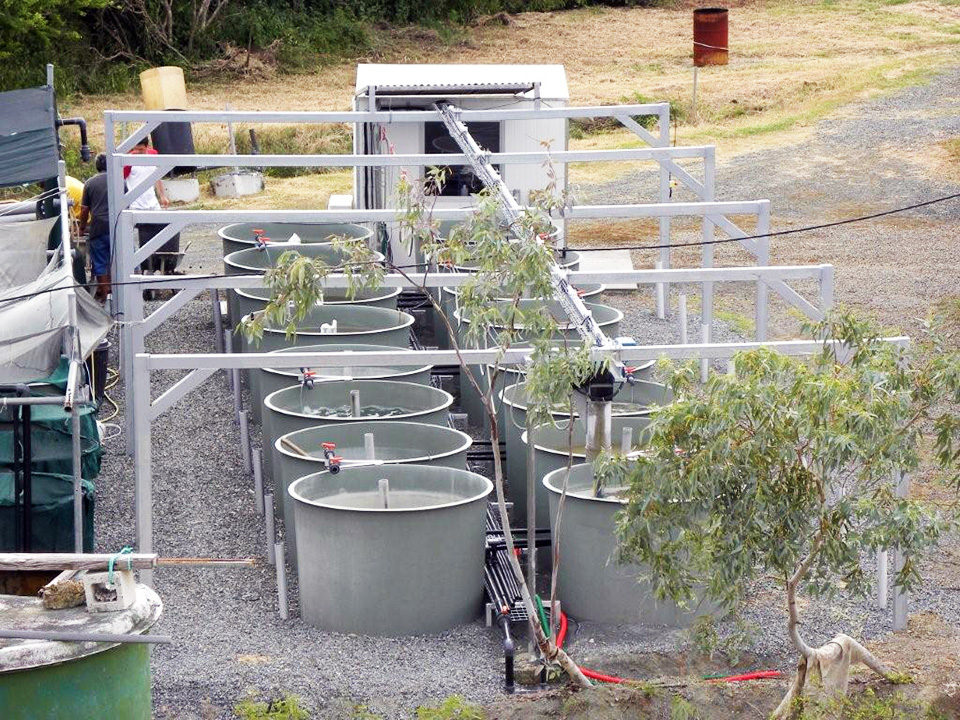
The outdoor culture system was set up at Saint Vincent station in Boulouparis, New Caledonia, to help find suitable fish for polyculture with shrimp that could contribute to sustaining the area’s shrimp industry.The farming of blue shrimp (Litopenaeus stylirostris) has been practiced for over 30 years in New Caledonia, where semi-intensive grow-out techniques produce an annual average production of around 2,000 metric tons (MT). The shrimp industry, however, is affected by seasonal mortalities caused by “syndrome 93” during the cold seasons or “summer syndrome” during the warmer months. These pathologies reduce profitability and affect the sustainability of the industry.
Blue shrimp/fish polyculture
Shrimp/fish polyculture has demonstrated itself as an ecologically and economically sound method of sustainable shrimp culture and an effective choice for solving and/or minimizing some of the problems the shrimp industry currently faces. Studies on polyculture of penaeid shrimp with omnivorous fish have found a remarkable improvement in water quality. The fish help to reduce organic wastes and selective phytoplankton, clean the pond bottom and increase nutrient uptake into cultured animals.
Based on a literature review, herbivorous siganids and omnivorous mullets could be excellent candidates for polyculture with shrimp because the fish help decrease the impacts of disease, prevent deterioration of the environment and increase the production in the ponds.
The authors therefore conducted an experiment on polyculture of blue shrimp with goldline rabbitfish, Siganus lineatus, or Mugil species mullet in a mesocosm system to evaluate the effects of polyculture on production performance and environmental quality. Finding suitable fish for polyculture with shrimp would contribute to sustaining the shrimp industry in New Caledonia.
Study setup
With grant support from the South Province of New Caledonia Agreement C.486-10, the study was conducted in an outdoor system that consisted of 16 circular, 1.7-m2 fiberglass tanks. Each tank contained a 15-cm layer of sediment and a 75-cm-high water column with 1,275-L volume. A daily water exchange of around 10 percent was applied.
Shrimp fry weighing approximately 2.9 g each were randomly stocked into the experimental tanks at density of 15/m2. One month later, rabbitfish or mullet fingerlings were added to the shrimp tanks to form polyculture treatments.
Hatchery-sourced rabbitfish weighing 25.5 g were stocked into the shrimp tanks at either 1.2 fish/m2 or 2.4 fish/m2. In other tanks, 20.5-g wild-caught mullet were added at 1.2 fish/m2. A control treatment had no fish. All treatments were randomly distributed among tanks with four replicates per treatment.
Shrimp were fed a commercial pelleted feed at 3 to 5 percent of shrimp biomass daily. At the beginning and end of 12 weeks of culture, shrimp and fish were sampled and individually weighted to evaluate the growth performance. Environmental parameters were regularly sampled and analyzed to estimate environmental variations.
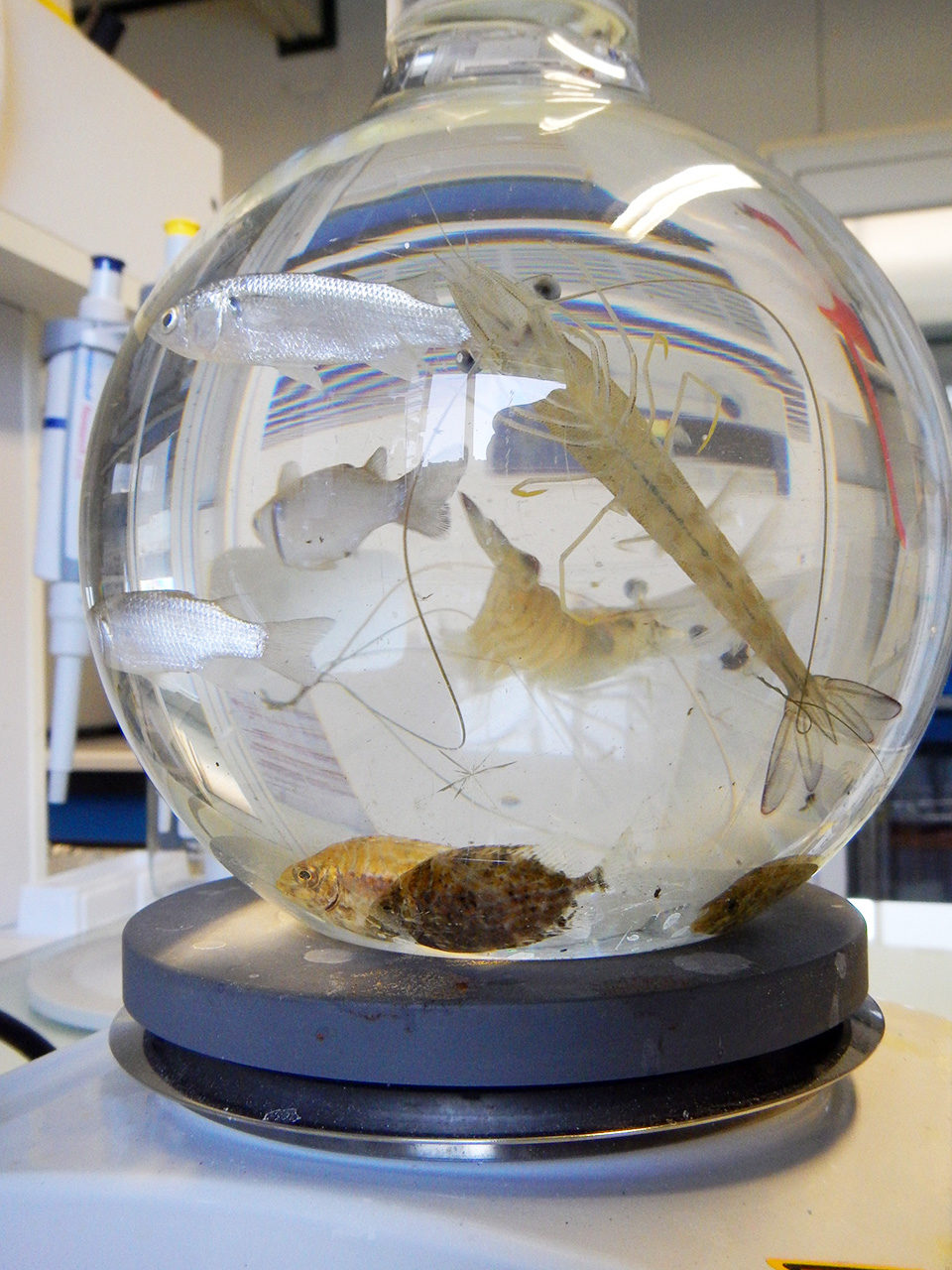
Results
At 62.5 percent, shrimp survival was lowest in mullet polyculture, while the 80.8 percent survival in the high-density rabbitfish polyculture treatment was highest. In addition, the standard deviation of shrimp survival rate decreased from 20.7 percent in the control to 7.0 percent in the high-density rabbitfish treatment.
Although shrimp yields were not significantly different among treatments, the values of 145.4-170.3 g/m2 for rabbitfish polyculture were greater than the 143.2 g/m2 yield for the control. The mullet treatment had a slightly lower value of 130.3 g/m2.
These results showed the presence of the fish had no negative effect on shrimp growth. The shrimp growth obtained in this study was also similar to the results recorded in other research on blue shrimp monoculture in earthen ponds in New Caledonia.
The 100 percent fish survival and growth rates were similar in all polyculture treatments. The fish yield, however was significantly higher in the high-density treatment with rabbitfish. The total combined shrimp and fish yields were higher in the polyculture treatments than the shrimp production in the control (Fig. 1).
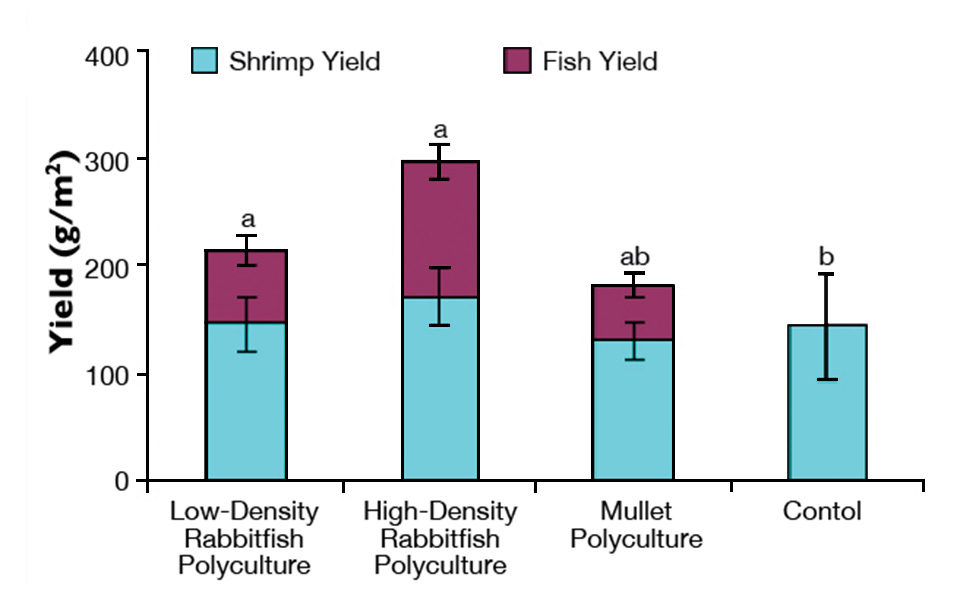
The overall feed-conversion ratio (FCR) was significantly lower in the high-density rabbitfish polyculture than those in the mullet polyculture and the control (Fig. 2). Furthermore, rabbitfish polyculture decreased FCR by 31.6 percent and 47.4 percent in the low- and high-density rabbitfish treatments, respectively, compared with the control.

Water quality
All the results indicated that there were few changes in the environmental quality in all treatments throughout the culture period. The 22.4-26.5 degrees C temperature and 5.5-9.4 mg/L dissolved oxygen, salinity and 8.2 pH levels were similar in all treatments and generally within suitable ranges for shrimp and fish growth.
Turbidity, total dissolved nitrogen and total ammonia nitrogen values were only slightly different among treatments. Although the mean soluble reactive phosphorus concentration was significantly higher in the high-density rabbitfish polyculture than those in the other treatments, its values maintained low in all treatments (0.15 to 0.26 µ).
No significant difference was observed in all sediment parameters among polyculture treatments and the control. Values for pH ranged 6.8 to 6.9. Trends in redox potential were similar across all treatments.
Perspectives
Rabbitfish have fast growth, tolerance of crowding and a range of environmental conditions, good flavor, and high demand and market prices. The results of this study indicated that polyculture of blue shrimp with goldline rabbitfish produced an excellent secondary crop and also improved food utilization without adverse effects on shrimp production and additional environmental degradation in the culture system.
Although shrimp/mullet polyculture did not get high results for production performance and environmental improvement, mullets are also potential species for polyculture with shrimp. The omnivorous fish could help control organic matter in polyculture systems.
Further research needs to be conducted to find the optimum density and biomass of fish and shrimp to achieve consistently high production and maximum environmental efficiency. Studies of pathological conditions could test the effects of co-culture on conditions such as vibriosis.
(Editor’s Note: This article was originally published in the July/August 2015 print edition of the Global Aquaculture Advocate.)
Authors
-
Dr. Trung Cong Luong
Nha Trang University
Nha Trang, Vietnam -
Dr. Sébastien Hochard
ADECAL/Technopole/Programme
ZoNéCo
Nouméa, New Caledonia -
Florence Royer
IFREMER Lead
Nouméa, New Caledonia -
Dr. Hugues Lemonnier
IFREMER Lead
B. P. 2059
98846 Nouméa, New Caledonia[114,102,46,114,101,109,101,114,102,105,64,114,101,105,110,110,111,109,101,108,46,115,101,117,103,117,104]
-
Pr. Yves Letourneur
Université de la Nouvelle-Calédonie
Laboratoire Live
Nouméa, New Caledonia
Tagged With
Related Posts
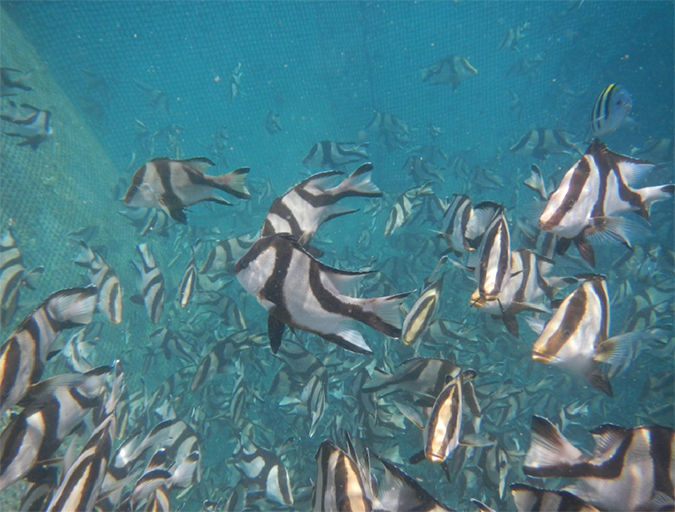
Responsibility
Assessing culture potential of red emperor snapper in New Caledonia
The red emperor snapper, known as “pouatte” in New Caledonia, is valuable throughout its broad geographic range and a highly valued food fish locally. Declining wild catches and market demand have provided the incentive to carry out technical feasibility studies to determine its commercial aquaculture potential.
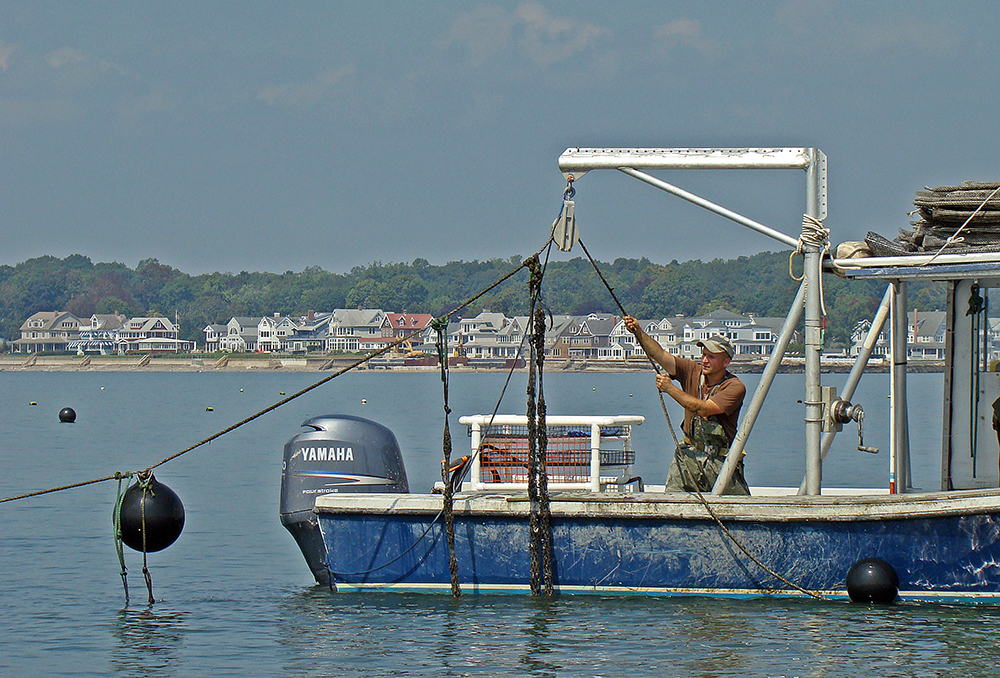
Responsibility
Lease, seed and repeat: GreenWave’s replicable aquaculture
Don’t call it integrated multi-trophic aquaculture: Former commercial fisherman Bren Smith says polyculture of non-fed species is the future of aquaculture.
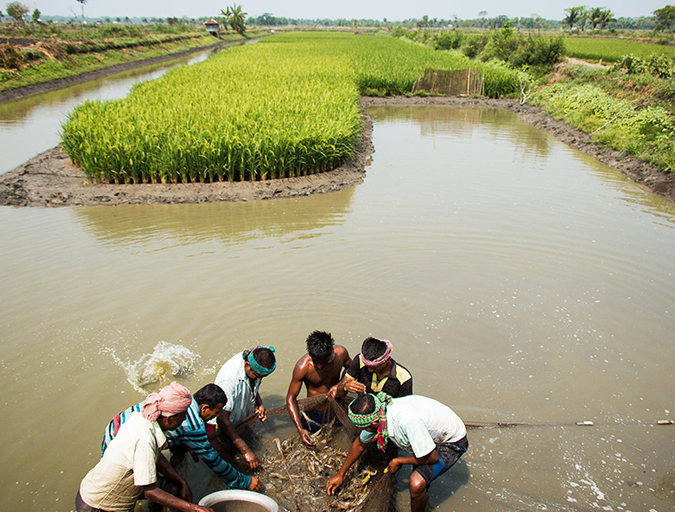
Responsibility
Rice-fish integration for high saline, coastal areas of Bangladesh
The Southwestern coastal zone of Bangladesh is agro-based and one of the world’s most populous, poverty-stricken and food-insecure regions. There is an opportunity to diversify and increase productivity by integrating rice with aquaculture during the monsoon season through adoption of water management practices.
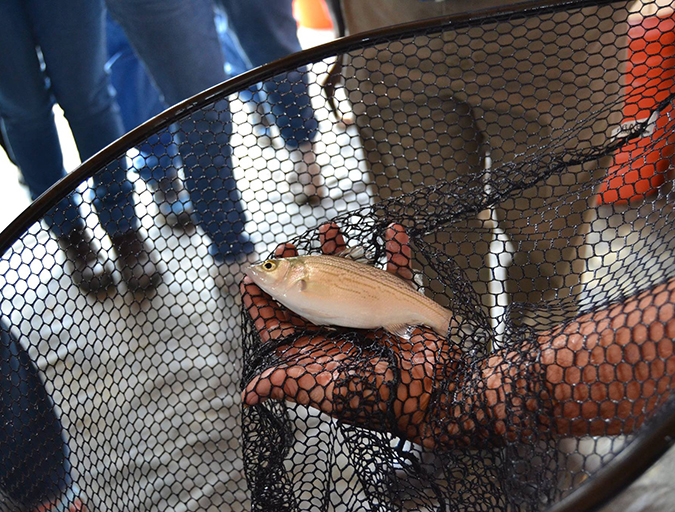
Intelligence
Young aquaponics, aquaculture company gets big boost
Fluid Farms, an aquaponics produce grower in Maine, leans on multi-trophic aquaculture to provide nutrients for its plants. The company is now selling its hybrid striped bass to the local market and, armed with a $50,000 innovation prize that will fund a new heating system, is expanding its horizons.


